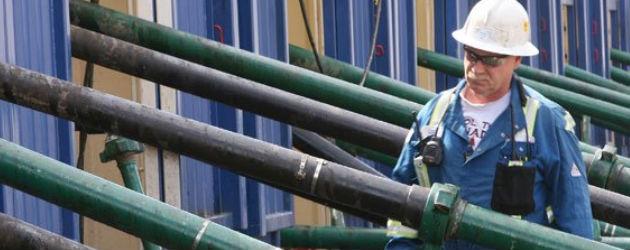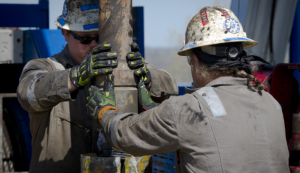Major workforce shortage pounding energy industry
 Courtesy of FuelFix.com: The energy industry is heading for a major shortage of skilled workers within a decade, an expert told members of the American Fuel and Petrochemical Manufacturers at its annual meeting here Tuesday.
Courtesy of FuelFix.com: The energy industry is heading for a major shortage of skilled workers within a decade, an expert told members of the American Fuel and Petrochemical Manufacturers at its annual meeting here Tuesday.
There are about 4.5 million to 5 million skilled trade workers in the oil and gas industry in North America, and that’s down about a million from the mid 2000s, said Daniel Lumma, senior vice president of Kiewit Oil, Gas and Chemical North America in Houston.
Another “scary statistic,” he said, is that in 10 years, about half of the industry’s skilled trades workers will have retired.
 All this is occurring as mega projects are underway or are on the drawing board.
All this is occurring as mega projects are underway or are on the drawing board.
Lumma cited Lake Charles, La., where planned projects include major gas-to-liquids facilities and perhaps five liquefied natural gas projects.
“If all of those projects happen, the peak workforce would have to multiply five to six times above what it is right now,” he said. “The fact is, that’s not going to happen.
“We’re heading into a very, very significant demographic issue.”
Many of planned mega projects will shift to North America because of the boom in shale drilling and the development of major petrochemical projects, and that will exacerbate the worker shortage, Lumma said.
One solution to the problem, he said, is involving key participants in a project from the earliest phases. Early planning is essential from all parties, including contractors, to ensure that the number of workers will be sufficient by the time the project’s employment is at its peak.
It also helps to get involved with local union halls, as unions can help with recruiting and training, he said.
In non-union areas, energy employers may have to set up skills training. And he suggested that oil and gas companies consider hiring veterans.
At the meeting at the Marriott Rivercenter, Lumma was just one of dozens of experts who spoke on technical issues and industry trends.
Neil Earnest, president of Addison-based consulting firm Muse, Stancil & Co., discussed pipeline access — or the lack of it — for North American crude oil.
Big bonuses: Luring top oil talent demands perks
The prospect for crude oil supply from Western Canada “is astonishing,” Earnest said.
“In terms of scale, you can’t go anywhere else in the world to find this level of production.” And that’s on top of sizeable increases in U.S. crude oil production.
Pipelines get built to transport crude from where it’s abundant to where refineries are.
“But the historical reality is that the great bulk of crude oil was transported from western Canada into the Midwest and from West Texas up to the mid-continent and to the Gulf Coast,” he said.
However, “many of these pipelines start in the wrong place now or go to the wrong place now — or both,” Earnest said. “As a consequence, we’re in the midst of a transportation reconfiguration of North American crude oil transportation.”
Some planned pipelines would transport crude from West Texas and the mid-continent to the Gulf Coast, and more crude from western Canada and the Midwest to the Gulf Coast, he said.
Category: Fuel & Oil, General Update










